Anti-War March in London: In the face of protests across the country and the world – “between 3 January and 12 April 2003, 36 million people across the globe took part in almost 3,000 protests against the Iraq war” the USA together with the UK, Australia and Poland began the invasion of Iraq on 20 March 2003.
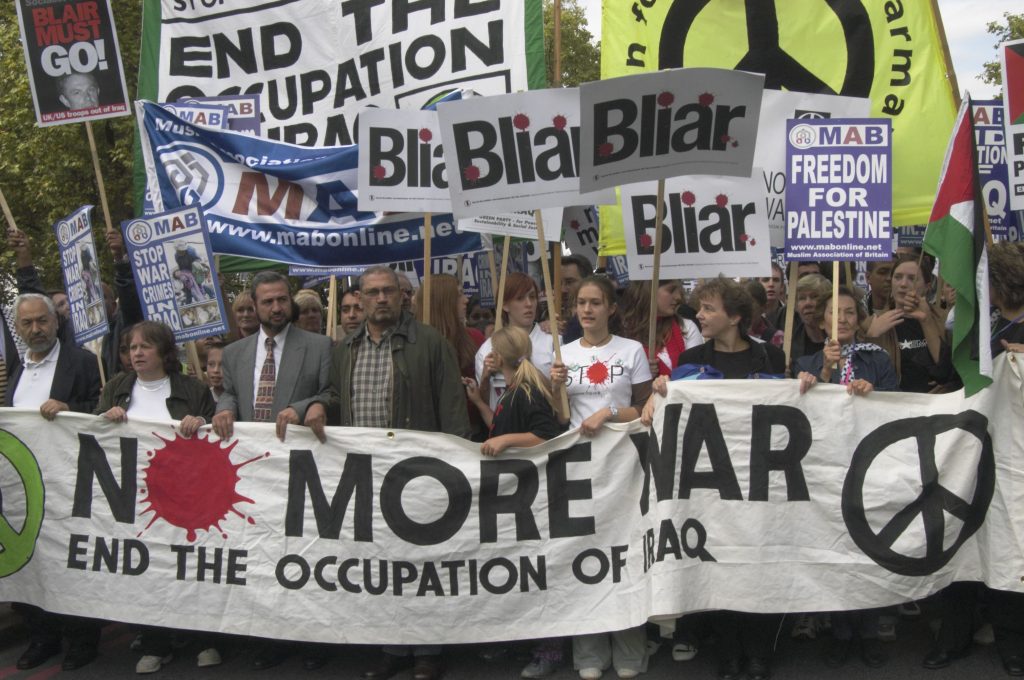
In the UK we had our largest ever anti-war protest on 15th February, with estimates of between 750,000 and 2,000,000 people taking part in a march and rally. I wasn’t there as I had come out of hospital the previous day and was still too weak to walk more than a few steps, so was left at home when my wife and elder son went out to protest. It was the only major London protest against the war I didn’t photograph.
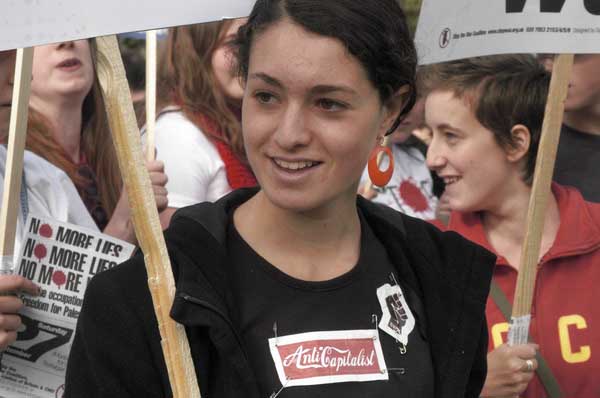
Protests in London continued, with people angered that their voices had not been heard, and particularly as we learnt more about the lies and deceit that Tony Blair had marshaled to get the decision to go to war past Parliament and in particular about the two ‘Dodgy Dossiers’ which Alistair Campbell had “sexed up”, the later one plagiarised from an article by a research associate at a US institute and the earlier making false claims about “weapons of mass destruction.” No WMDs were found in Iraq.
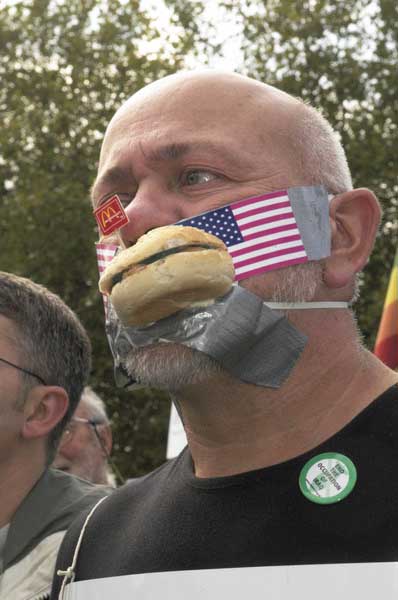
The earlier dossier had made the false claim that some of Iraq’s chemical and biological weapons were deployable within 45 minutes, a claim that according to BBC journalist Andres Gilligan was added at the insistence of Andrew Campbell. Gilligan claimed that his source for that was an off-the-record talk with weapons expert David Kelly. Although the Hutton Inquiry concluded Kelly had killed himself following the investigations into this exposé some still suspect our security services took a hand in his death.
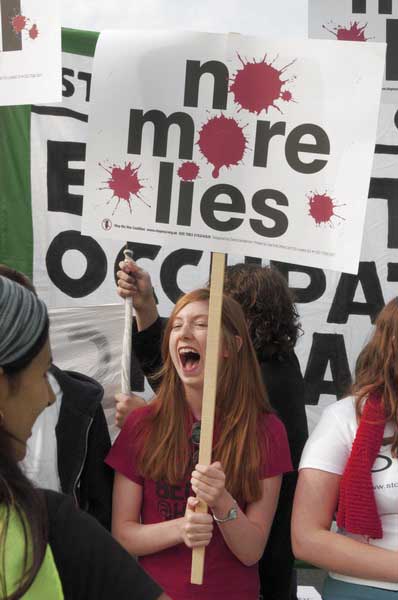
You can read an account of the protest in The Guardian, Anti-war protesters vent their frustration, which notes that this was “Britain’s fifth anti-war protest in a year snaked from Hyde Park through the centre of London and filled Trafalgar Square with anti-Blair placards. It was the first national rally since Saddam Hussein’s regime fell in Iraq and the tone had changed since 1.5 million marched to prevent war in February.” It gives the police estimate of the numbers taking part at 20,000 and Stop the War’s figure of 100,000 – the actual figure was probably about halfway between the two.
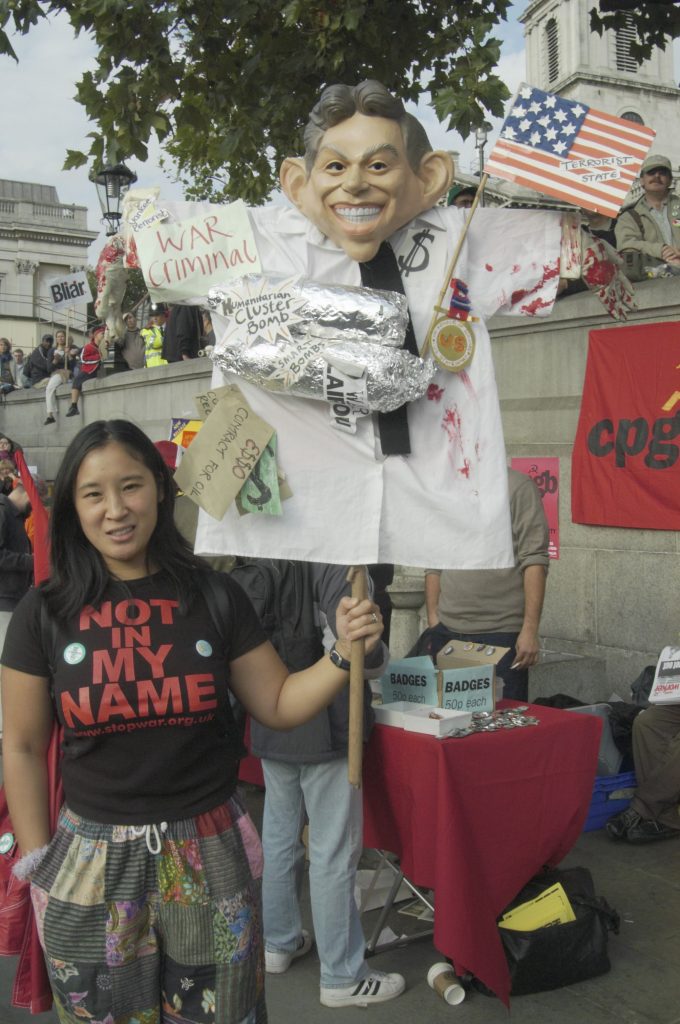
I didn’t write much at the time – and didn’t post many of the pictures I took, and a few of those here are published for the first time. Here is my 2003 piece – with a link to the orginal.
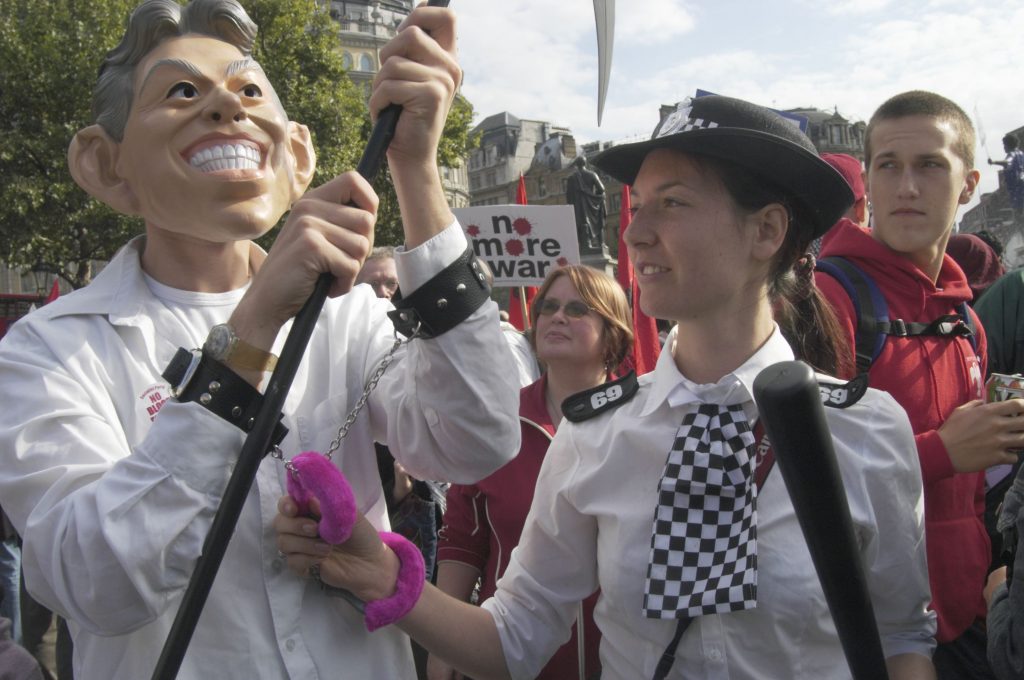
The Anti-War March on 27 September was another big event, though not on the massive scale of February’s event.
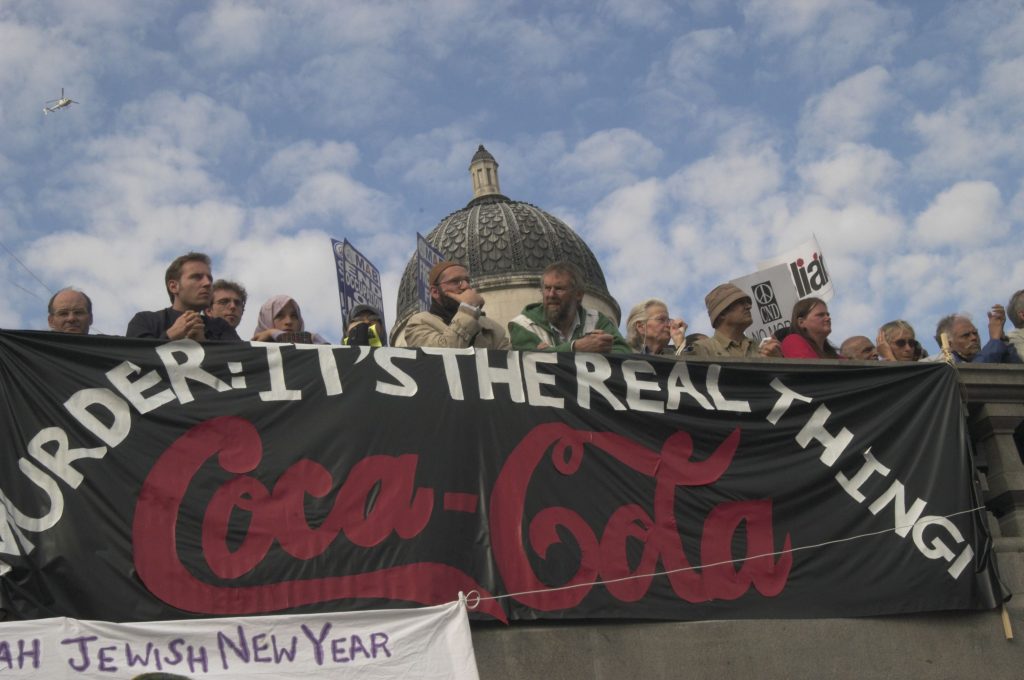
It took about an hour and a half to pass me on Park Lane. The numbers reported by the police and BBC both seemed derisory. Perhaps they were closer to the numbers that ended up in Trafalgar Square, but there were far more on the march itself.
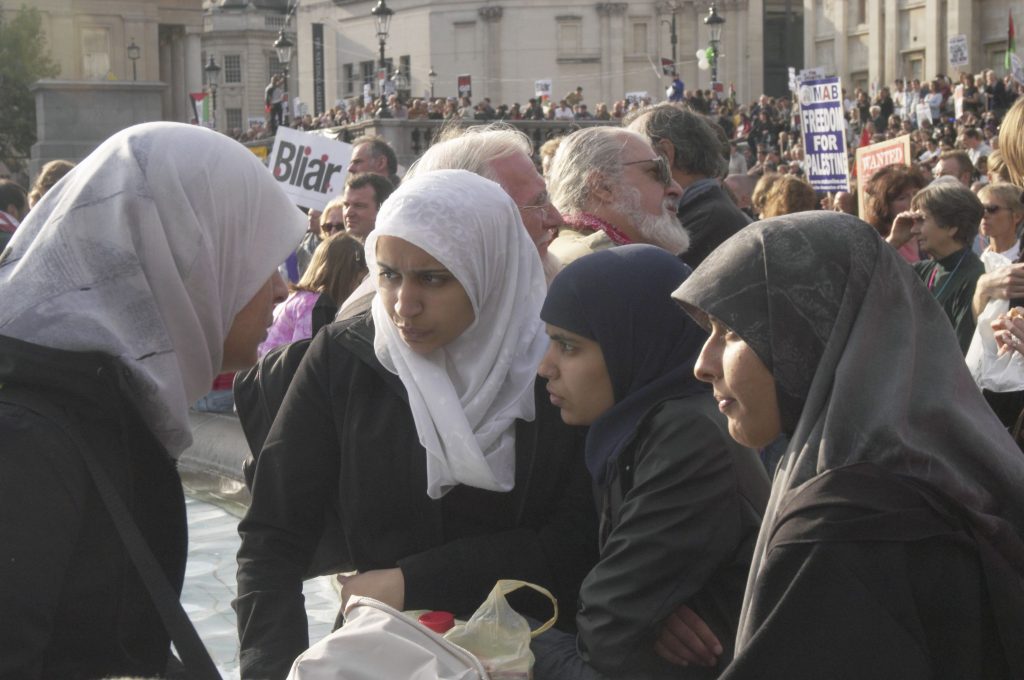
Estimating numbers is hard once the numbers get too high to really count – perhaps a few thousand. The Countryside Alliance had the right idea on this, with their arch on Whitehall although I never see one of their car stickers with 400 thousand and something on without thinking ‘and I was 3 of them.’
More pictures at http://mylondondiary.co.uk/2003/09/sep27-01.htm
Flickr – Facebook – My London Diary – Hull Photos – Lea Valley – Paris
London’s Industrial Heritage – London Photos
All photographs on this page are copyright © Peter Marshall.
Contact me to buy prints or licence to reproduce.